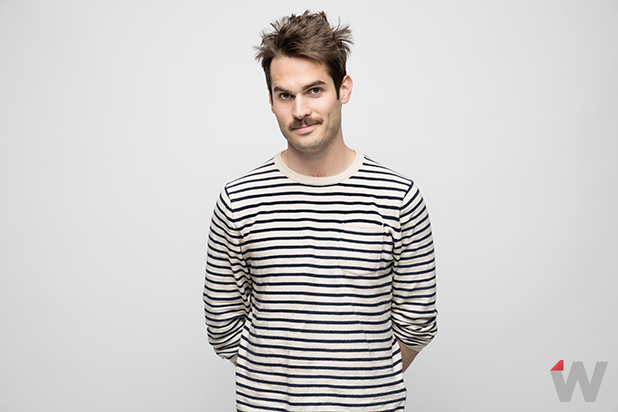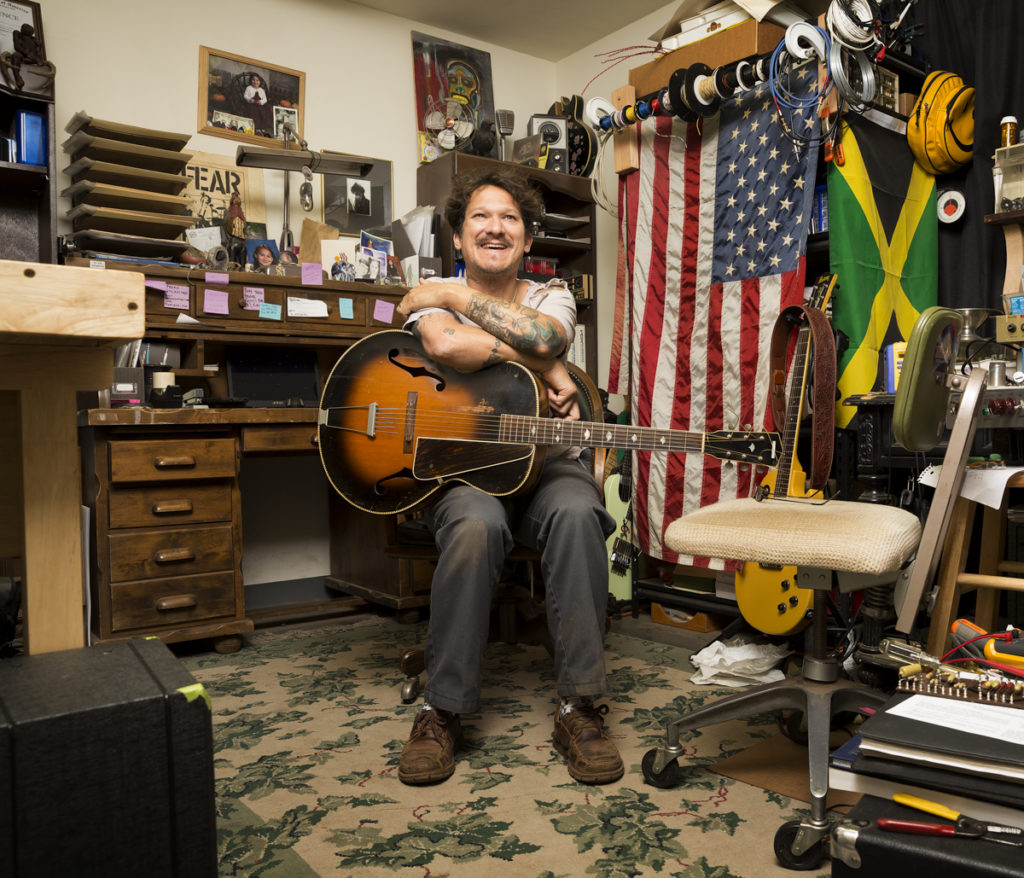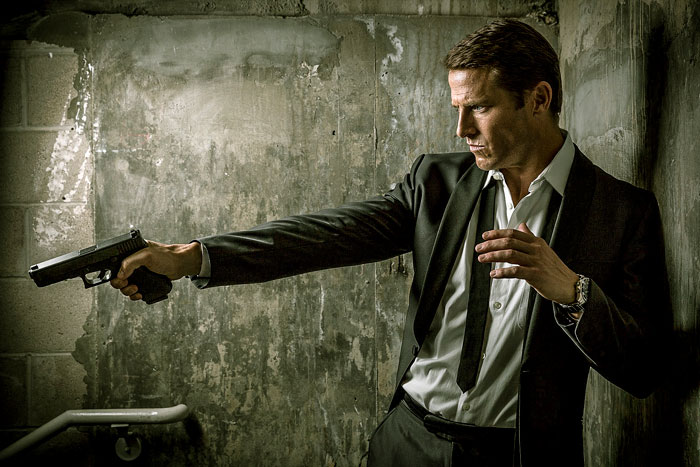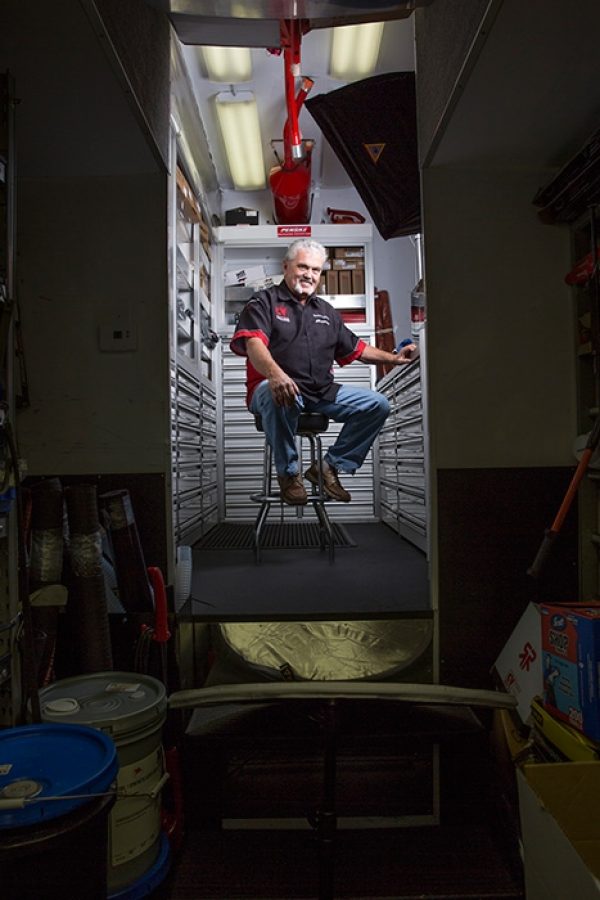Simple Photography Lighting Tips | Ian Spanier
Sometimes One Light is Enough
Confusing right?
I’ll admit that sometimes on set it’s about the “show” that you need to put on for your client. What I mean by this, is that there are times that having lots of equipment around and assistants constantly moving becomes a necessary part of showing your client that you are more than just a monkey that presses a button. That’s all fine and good, but sometimes you can say a lot more with one light on a c-stand, than a cube truck full of gear.
All too often photographers these days think they need tons of equipment to make a good image. This can get real expensive. If you think about lighting, it’s usually a case where we are trying to replicate what the sun does, after all, what is the sun but one light!
Early in my career I would walk around taking note of how the sun looked different at different times of day, weather conditions, and how it reflects off different surfaces. From this exercise, once I had my hands on lights, it was an easier step to sort out how to recreate these natural and unnatural occurances.
As my career has grown, I often find the need to use at least two lights, often I want to keep it simple, but the job calls for a need for a fill light, or a hairlight, or a highlight here or there, even at times, just a need to open up a room. Regardless of this, when I can, I often will challenge myself to go to a shoot with only one light. I’m not one to fall into routine, making photographs is supposed to be fun, remember? Anyway, I get bored doing the same set ups all the time.
The sun is one light. what do we learn from this?
what light does
When we look at the sun, be in bright and shiny, behind clouds, reflected off surfaces, coming up or going down we can learn a lot. There’s an emotional quality to light- and understanding how to control it will lead you to better images.
the properties of light
Light takes many different forms- many of the words we need to work with are: soft, hard, specular, warm, cold, direct, indirect, and diffused.
how to manipulate light
When it comes to manipulating light- we have many tools to do this, many different companies make everything from reflectors to umbrellas, grids, snoots, octabanks, softboxes, scrims and more. If we study light in different scenarios we can learn to mimic the feel of light- and if you take the time to test, you can have all the tools at hand when you need them.
Benefits of one light photography
Don’t get bogged down by the gear.
Nothing beats having everything you need at your disposal- but that’s not always possible. Sometimes all you have is your camera. Learning to work minimal ONLY helps when you have everything you need.
When working with artificial light, one light can be enough.
Having one light solutions to work with benefit your speed, ability to solve problems, and work in tough environments with never having to say you can’t.
Challenge yourself
I love to make mistakes- just not in front of clients. Challenging myself regularly only makes me better- and when things go wrong, and they will- I have solutions.
Here’s a series of images that I created using one light along with the story behind them, how each was set up. What you will find is that inside or outside, you can make so many different looks from just one light source…just like how available light works in its many forms.
- Jim Cummings, Actor/writer/director shot for The Wrap. With celebrity portraits, I always assume I will have 2 minutes. So I like to keep things simple unless it’s pre arranged we will have a lot of time. For this portrait done before an interview at The Wrap’s offices, I used a very easy, and simple set up. The idea is to create what Irving Penn made famous which is called “North Light” essentially light being diffused- or spread out, and bounced off the sky. When shooting with a large octa, it’s a bit more directional- but the double baffles inside the octabank soften the light. The advantage of a strobe here is being able to better freeze motion

- For this image shot for Danskin clothing company- the original plan was to shoot the model in the street jumping rope. The sun however was at it’s highest point in the sky and we had a huge shot list to get through. This was before high speed sync- which has helped but still not completely beat out the power of a bright sun (unless you have a lot of lights). Rather than fail miserably, I needed a quick solution. We found a space between two buildings and using a strobe and a small octadome, I was able to control the light and create the feel the CD wanted- which was essentially a mid/post workout shot.
- Portrait of Ex-Isreal Army Soldier. For my personal project Right Next Door I have approached the entire series with the challenge of only using one light. Unlike my typical work- which is generally technically heavy, this was a means to push myself. By relying on one light I don’t have a way to directly manipulate the light- so I fire the strobe into a wall or ceiling- which ideally is white and that spreads the light around the room and on my subjects.

- Actor Andy McDermott asked me to create an image of him as a secret agent/James Bond type. Shooting in a parking garage- we took to a tight stairwell. With my assistant holding a Small Strip Bank on a Photoflex LiteReach pole, horozontally, on my subject- flaring it slightly toward camera to take some of the light off the wall.

FROM one light comes many options
More examples of one light photography. The main point here is that with different modifiers you can create a different feel or look to your lighting.
(NOTE ON NASCAR) This is not limited to just indoors either- when working outside- making the sun your second light is always an option. I included this one just to show a case where we were only able to move around a NASCAR event with one light- in some cases I used the sun when I could- other times I went inside garages or between trailers to make my light the only light source.
This one is also outside- but at night. I eliminated all other lights through a higher shutter speed.
Is it the sun or not?
The one point I want you all to walk away from this with is that whether the sun or an artificial light source, making images made with one light should be as seamless as those that are actually lit by the sun- and those that are not. Feel free to guess here.
Link to article https://t.co/ISJcNoUBba


Great photographs. Brilliant lighting.